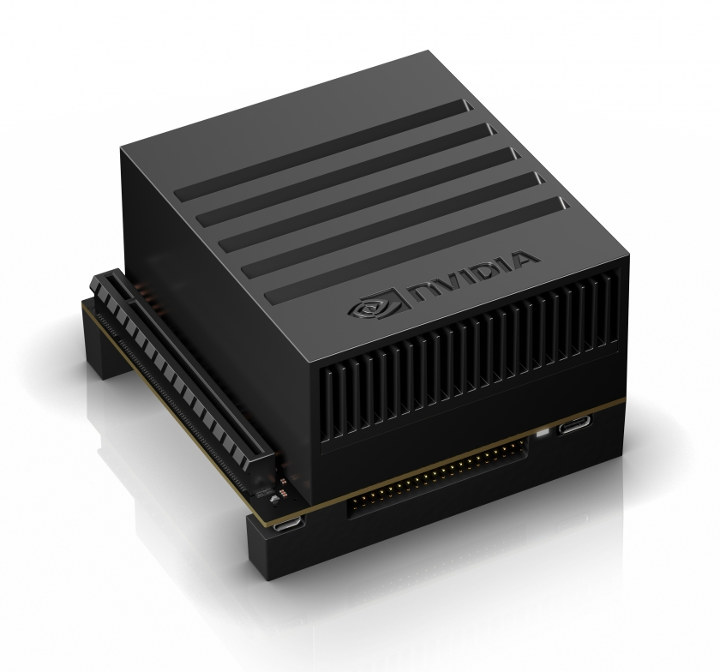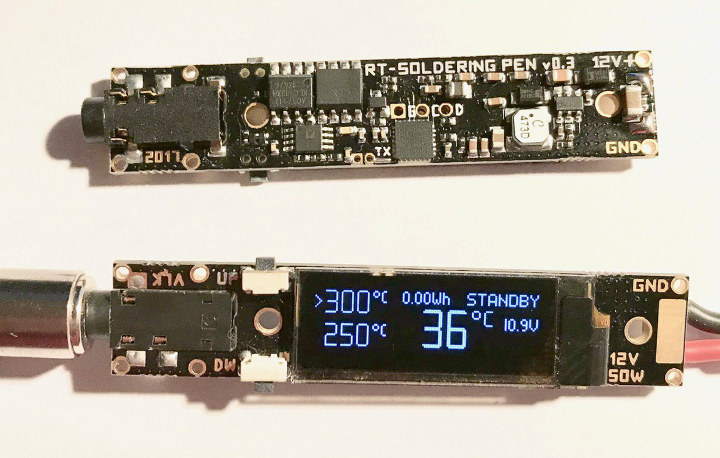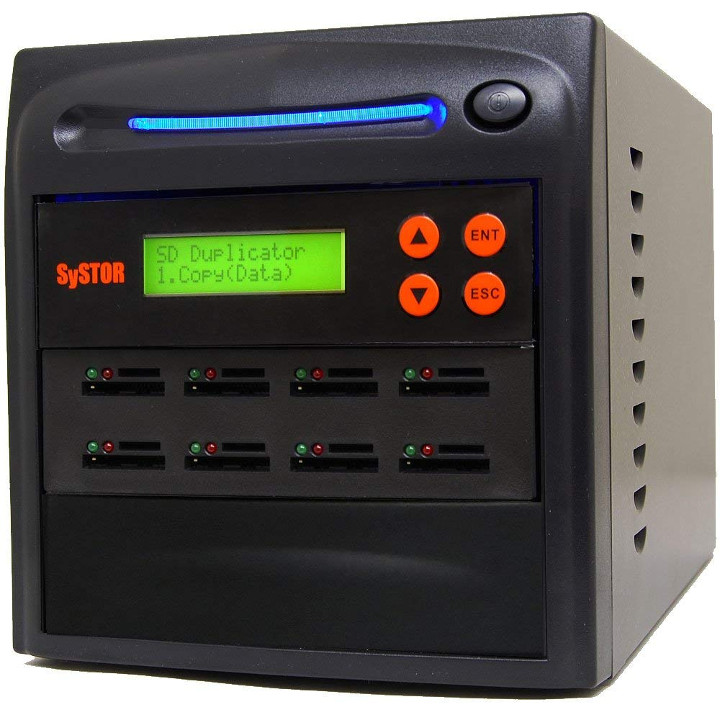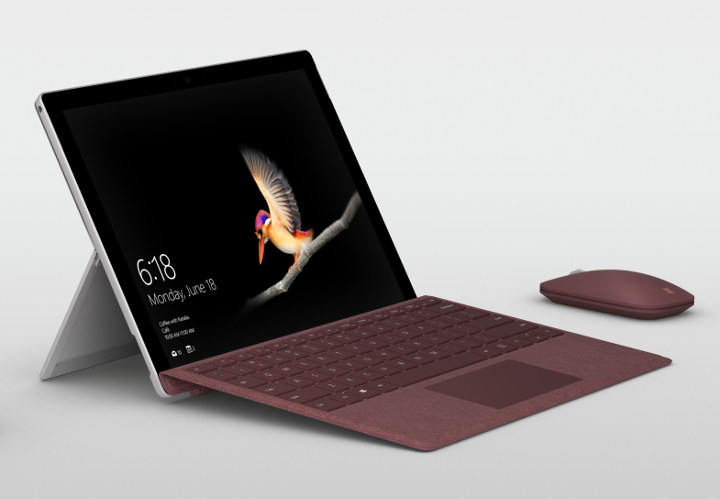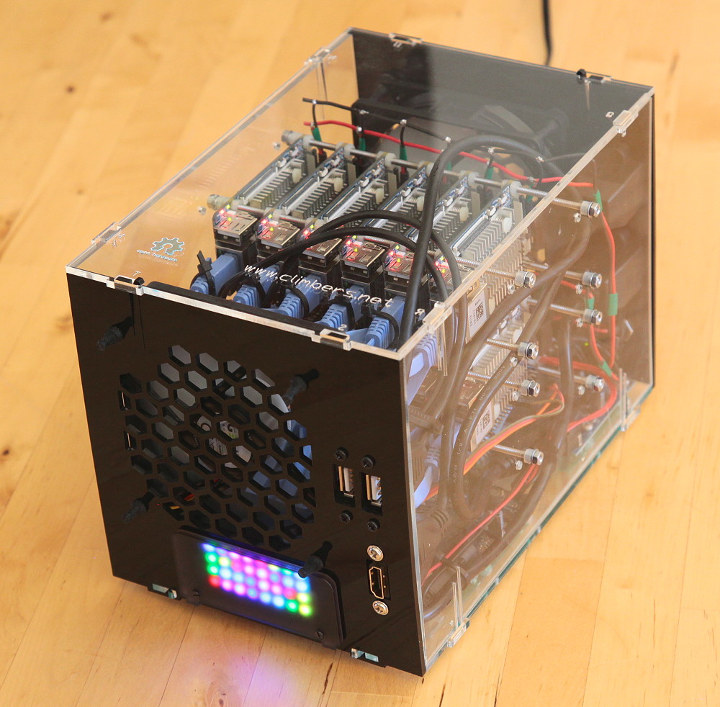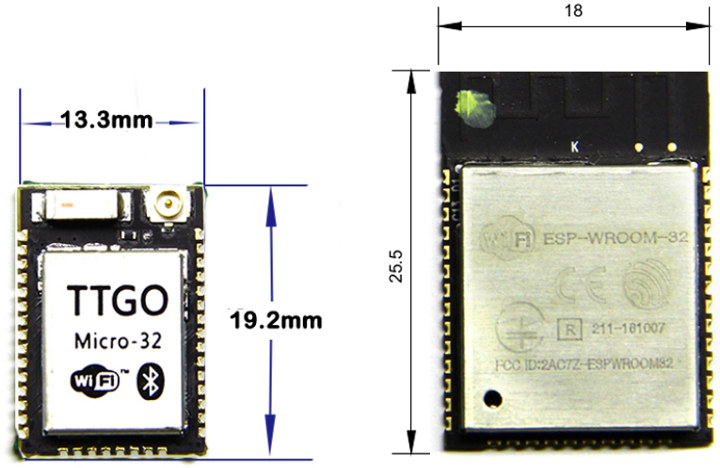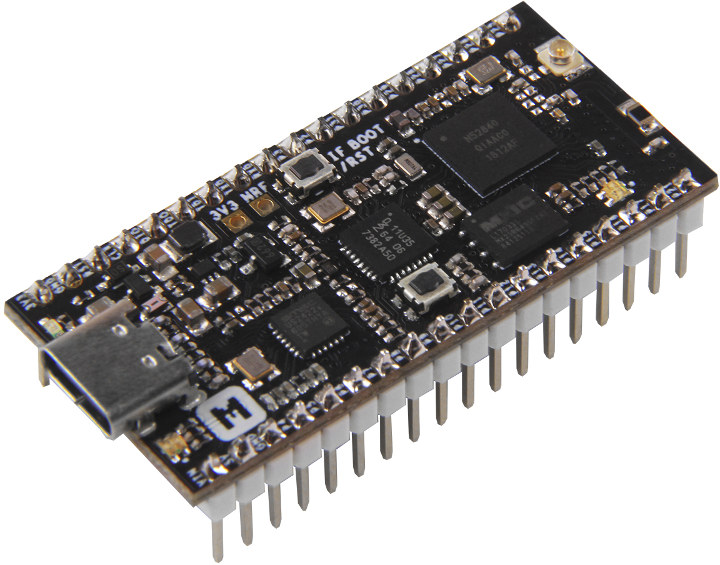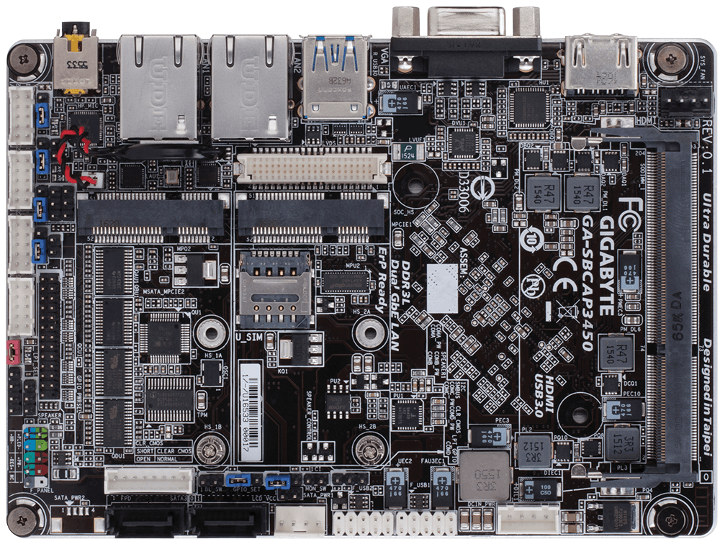NVIDIA unveiled Jetson Xavier module and devkit last month, but the company did not release the full information, and for example we did not get any clear photo of the module and kit. Charbax did shot a video with more details at the time, but NVIDIA has now published more information about their upcoming $1,299 Jetson Xavier Developer Kit, including an introduction video which I’ll embed at the end of this article. The first thing to understand is that the module is not actually used in the developer kit, and will only used in actual mass-produced products. The main difference is the thermal solition. The development kit including a large heatsink, while the production module has a thermally conductive plate to let product designer select the most suitable thermal solution for their products. The specifications are still basically the same. For Jetson Xavier (production) module: SoC – NVIDIA Jetson Xavier […]
This Soldering Pen Board with Audio Jack Supports Weller RT Tips
The 3.5mm audio jack may be slowly disappearing from new mobile phones, but I’ve recently discovered they were also used in some soldering irons such as the upcoming TS80 USB soldering iron succeeding TS100 model. I initially thought it was a custom design from the maker of TSxxx soldering irons, but this morning I’ve come across the “RT Soldering Pen” board which also features a 3.5mm (audio) jack and can be used to make your own soldering iron by 3D printing your own enclosure, adding some power source, and inserting one of the many Weller RT tips available into the jack. RT soldering pen board specifications: MCU – STMicro STM32F031 Arm Cortex-M0 micro-controller Display – 0.91″ OLED display with 128×32 resolution Compatible with all Weller RT tips with 3.5mm jack. Set-point temperature – 20°C – 400°C with about +/-5°C accuracy (calibration is planed) Maximum measurable temperature – 500°C Heating speed […]
SySTOR (Micro) SD Card Duplicators Can Handle Up to 200 SD Cards
So this week-end, I started to play with ROC-RK3328-CC (Renegade) board that I received from T-Chip / Firefly-Team and as always, I used Etcher to flash the firmware images to micro SD cards. Once flashing is complete, you’ll get a screen mentioning Etcher Pro, a standalone hardware solution allowing to duplicate the content of one micro SD card to 16 other cards. That’s very interesting if you need to duplicate many cards for a project, but the only problem is that the device is not available just yet. So I thought such equipment must already exist and indeed, a company called SySTOR offers such systems able to duplicate one (micro) SD card to up to 199 other (micro) SD cards. Some of the specifications & key features of the system: Processor – Multi-core processor System Memory – 256 MB DDR3 Capacity – Various models from 4 to 200 micro SD […]
Microsoft Surface Go Tablet Based on Intel Pentium Gold 4415Y Processor to Sell for $399 and Up
Microsoft Surface devices are powerful but usually expensive ($2,000+) tablets and laptops, but the company has now launched an entry-level model called Surface Go, powered by an Intel Kaby Lake Pentium processor with 4 to 8GB RAM, 64 to 256 GB storage, and a 10″ high resolution display, and selling for $399 and up. Microsoft Surface Go specifications: SoC – Intel Pentium Gold 4415Y dual core/four thread Kaby Lake-Y processor @ up to 1.6 GHz (base frequency), with 24EU Intel HD Graphics 615 @ 300 / 850 MHz; 6W TDP System Memory – 4 or 8GB LPDDR3-1866 Storage – 64GB eMMC flash, 128GB or 256GB SSD, micro SD card slot Display – 10″ 1800×1200 PixelSense display; 3:2 aspect ratio; built-in kickstand with full friction hinge that extends to 165 degrees Cameras – 8MP Rear camera, 5MP Front-facing camera with Windows Hello facial recognition Audio – 3.5mm headphone jack Connectivity – […]
96-Core NanoPi Fire3 Boards Cluster is a DIY Portable Solution to Teach or Develop Distributed Software
Nick Smith has been messing around with clusters made of Arm boards for several years starting with Raspberry Pi boards, including a 5-node RPI 3 cluster, before moving to other boards like Orange Pi 2E, Pine A64+, or NanoPC-T3. His latest design is based on twelve NanoPi Fire3 boards with 8 cores each, bringing the total number of cores to 96. The platform may not be really useful for actual HPC applications due to limited power and memory, but can still be relied upon for education and development, especially it’s easily portable. Nick also made some interesting points and discoveries. It’s pretty with shiny blinking LEDs, and what looks like proper cooling, and the cluster can deliver 60,000 MFLOPS with Linpack which places it in the top 250 faster computers in the world! That’s provided we travel back in time to year 2000 through 🙂 By today’s standard, it would […]
TTGO Micro-32 is a Tiny ESP32-PICO-D4 Module
Unveiled almost a year ago, ESP32-PICO-D4 SiP (System-in-Package) combines ESP32 wireless processor, 4MB SPI Flash, a crystal oscillator, as well as some passive components, and allows more compact or thinner designs such as found in ESP32-PICO- Kit v4 development board. However, so far I had not seen any ESP32-PICO-D4 module, but TTGO Micro-32 fills the void as a compact module based on the SiP. TTGO Micro-32 module specifications: SiP – Espressif Systems ESP32-PICO-D4 based on ESP32 dual core processor + 4MB SPI flash Connectivity – Bluetooth 4.2 LE and 802.11 b/g/n WiFi up to 150 Mbps with chip antenna and u.FL (IPEX) connector Expansion – Castellated holes with GPIO, ADC, DAC, VP/VN, Touch, UART, I2C, and power signals Supply Voltage – 3.3V Dimensions – 19.2 x 13.3 mm (45% smaller than ESP32-WROOM-32) There’s no specific software for the module, since it should be software compatible with ESP-WROOM-32 (now called ESP32-WROOM-32). […]
Makerdiary nRF52840 Micro Development Kit Works with OpenThread, Arm Mbed OS, Zephyr OS, Mynewt, etc…
If you want to play around with Bluetooth 5, Nordic nRF52840 is probably one of the best option, and among the development board, $9/$12 Particle Xenon is hard to beat when it comes to value. But if you need a bit more storage, I/Os and features, Makerdiary nRF52840 micro development kit looks like a good candidate to evaluate, especially it supports plenty of frameworks / operating systems such as Arm Mbed OS, Zephyr Project, OpenThread, Mynewt, and others. It’s also the first MCU class board I’ve seen with a USB type C port, although I’m not sure it brings any benefits to this type of hardware. Makerdiary nRF52840 micro development kit (nRF52840-MDK) hardware specifications: SoC – Nordic nRF52840 Arm Cortex-M4F WiSoC with 1 MB FLASH and 256 kB RAM, Arm TrustZone Cryptocell 310 security subsystem External Storage – 64-Mbit QSPI flash Wireless Connectivity (on-chip) Bluetooth 5, Bluetooth Mesh Thread, IEEE […]
GIGABYTE Apollo Lake SBC Upgraded to a Quad Core Processor
GIGABYTE introduced GA-SBCAP3350 Apollo Lake SBC powered by an Intel Celeron N3350 dual core processor las year. The board came without any soldered memory nor storage, instead relying on a SO-DIMM slot, two SATA connectors, and/or an mSATA socket. The company has now launched a second Apollo Lake single board computer – GA-SBCAP3450 – with very similar specifications, except the processor has been upgraded to a Celeron N3450 quad core processor. GIGABYTE GA-SBCAP3450 SBC specifications: SoC – Intel Celeron N3450 quad core processor @ 1.1 GHz/ 2.2 GHz with 12 EU Intel HD graphics 500 @ 200 MHz / 700 MHz (6W TDP) System Memory – 1x SO-DIMM socket for up to 8GB DDR3L 1333/1600/1866 MHz Storage – 2x SATA 6Gb/s connectors, 1x MSATA connector (MSATA_MPCIE2), 2x 64Mbit flash for AMI UEFI BIOS supporting PnP 1.0a, DMI 2.7, WfM 2.0, SM BIOS 2.7, ACPI 5.0 Video Output 1x HDMI 1.4 […]


